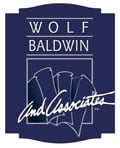Easements and Restrictive Covenants in Pennsylvania Deeds
In law school, one of the jokes that circulated through first-year property law class was this: with an easement you have the right to walk across your neighbor’s land; with a restrictive covenant, you have to run across because you’re not sure. This is what passes for humor in law school. Though not precisely funny, this “joke” does point up a basic truth: there is a lot of room for confusion, and uncertainty interpreting one’s rights and obligations under an easement or restrictive covenant, and even in determining whether a valid Pennsylvania easement, or restrictive covenant exists.
An easement is generally defined as an intangible, or non-possessory right to use another’s land for a precise and definite purpose not inconsistent with the other’s simultaneous right to use the same property, or, in language only a lawyer could love, an “incorporeal hereditament.” Typically, a Pennsylvania easement is created by written and signed agreement, or by a deed of easement or grant of easement. Often, an easement will be contained within the body of a deed providing for the outright conveyance of a parcel of real estate. This typically occurs where a seller subdivides real estate and either sells an otherwise landlocked parcel together with a right of way across the remaining lands of the seller, or where the seller retains the landlocked parcel, and conveys a parcel subject to the seller’s right of way across the land being conveyed. In either case, the easement will usually appear as a paragraph buried on page two of the deed of conveyance.
The Pennsylvania Statute of Frauds generally requires that any transfer of an interest in real estate, including the grant of an easement, is not binding unless reduced to a signed writing. As a result, no easement can arise on a handshake alone. Curiously, however, an easement can arise without any agreement at all. Under Pennsylvania law, if a seller of real estate sells a landlocked parcel of land at a time when the seller has remaining land which could provide the landlocked parcel with access to a public thoroughfare, and if the parties for some reason fail to provide for a driveway across the seller’s remaining lands, the law generally provides the purchaser with an implied easement over the remaining lands of the seller. Likewise, where the circumstances are reversed, such that the seller has landlocked himself by selling off a parcel between his remaining property and a public road, the law will create an easement in favor of the seller across the lands purchased by the buyer. An easement may also be acquired by “prescription.” An easement by prescription (also known as a “prescriptive easement”) arises from the continuous, notorious, adverse use of a driveway, or similar path across another’s land for a period of twenty-one years. As a result, if one were to continuously and openly use a path across another’s land for a period of twenty-one years or more, without the permission of the owner, then at the end of that twenty-one year period, the trespasser would have a right to continued use of that path as a matter of prescriptive easement.
Even when a document purporting to be an easement has been signed, and recorded in the office of the recorder of deeds, there can be confusion, and indeed litigation, over whether an easement remains, or ever existed. Initially, it is not unheard of for buyers of real estate (generally those who have failed to conduct title searches) to challenge recorded easements when they discover after purchase that another is using a path, or drive across their property. Challenges can be made on any number of grounds, and if the grant of easement is not carefully drafted to contain language establishing a present “grant” or “conveyance” of an “easement” or “right of way,” the document can be challenged, often opportunistically, as being no more than a temporary license to enter a property, or an agreement to later convey an easement. Such challenges rarely succeed. If the right to use another’s property was important enough to reduce to a document recorded with the recorder of deeds, it is fair to surmise that an easement was intended.
Occasionally, old and rarely used easements are challenged on the grounds that they have been abandoned. Even here, the prospects for a successful challenge are not great. In Pennsylvania, mere non-use of an easement does not constitute an abandonment. Rather, there must be some affirmative act of abandonment on the part of the person entitled to its use, such as a barricading of the way by fencing, or planting of trees, or else a twenty-one year blockage of the easement by the party over whose land the easement runs.
Often, there is a question of whether an easement ends when the grantee of that easement dies, or conveys his interest in the particular real estate. Some easements are considered “in gross,” meaning that they are personal to an individual, and are independent of the ownership of any particular real estate. Such an easement might exist, for instance, if an individual obtains an easement to cross a lakefront property for purposes of taking his boat in and out of the water. If the boat owner does not own any nearby real estate, that easement will be considered an easement in gross. In such a case, the easement would normally be considered personal to the grantee and would die with that grantee. On the other hand, where an easement is useful only to the owners of the adjoining property because of their ownership of that property, the easement would be considered “appurtenant,” meaning that it attaches to ownership of the real estate benefited by the easement, and runs with the land. This means that the easement is not personal to the original grantee of the easement. Instead, the easement will be transferred with any subsequent transfer of the property unless, and until it is otherwise extinguished.
Easements must be distinguished from restrictive covenants contained within deeds. While an easement is an actual conveyance of some of the grantor’s rights in a parcel of real estate, a Pennsylvania restrictive covenant is not a conveyance, but is a promise to do or not do a particular act with respect to the real estate. Like easements, covenants can be either personal obligations of the particular grantee, or can run with the land and perpetually bind all future owners of that land. Again, the question is the extent to which the obligation of the covenant is connected to the real estate itself.
Restrictive deed covenants in Pennsylvania come in many forms, and are designed to achieve many purposes. It is not uncommon for a deed to contain a covenant preventing a property from being subdivided, or used for nonresidential purposes. Some deeds set forth affirmative obligations on the part of the grantee to continue using a property for a particular use for a period of years or until the death of a particular individual, or the occurrence of some other event. In some instances, a zoning hearing board will require that a property be re-deeded so that the deed itself contains the restrictions imposed by the zoning hearing board as a condition of granting zoning relief.
Perhaps most commonly, an individual’s use of a property she may purchase in a condominium or planned development will be limited by restrictive covenants. Typically, these restrictive covenants are not contained within the individual’s deed, and in most cases the individual does not expressly agree to these particular restrictive covenants. Rather, in most cases, the restrictive covenants are contained within an entirely separate declaration, or deed setting forth restrictive covenants that will bind all subsequent buyers of the property. For this reason, when buying a property, it is important that the buyer review any known restrictive covenants before the settlement, and also carefully review her title report to make sure that there are no unknown restrictive covenants.
Almost every property is burdened and, in most cases, benefited by one or more easements or restrictive covenants, or both. The most common easements are in the nature of utility easements, and are the means by which a property obtains electric, gas, and telephone service. These sorts of standard utility easements are not considered clouds on title, and do not effect the marketability of the property. Other more intrusive easements may be considered clouds on title, and can affect the marketability and the value of a particular property. It is therefore important that a prospective buyer carefully inspect the property before purchase to make sure that there are no unexplained paths, or driveways that might be the outward manifestation of an unrecorded easement. It is equally important that the prospective buyer examine her title report and, depending on what that report shows, also examine the deeds in her chain of title to make sure there are no unexpected easements or restrictive covenants affecting the property. When in doubt, consult with an attorney at Wolf, Baldwin & Associates, P.C. prior to the purchase of a property. What is true in medicine is also true in the law. An ounce of prevention is worth a pound of cure.
The real estate lawyers at Wolf, Baldwin & Associates, P.C. have experience dealing with easements, restrictive covenants, and other general real estate matters in Montgomery County, Berks County, and Chester County, PA. Please click here to contact us today to discuss your real estate questions. We look forward to hearing from you.

